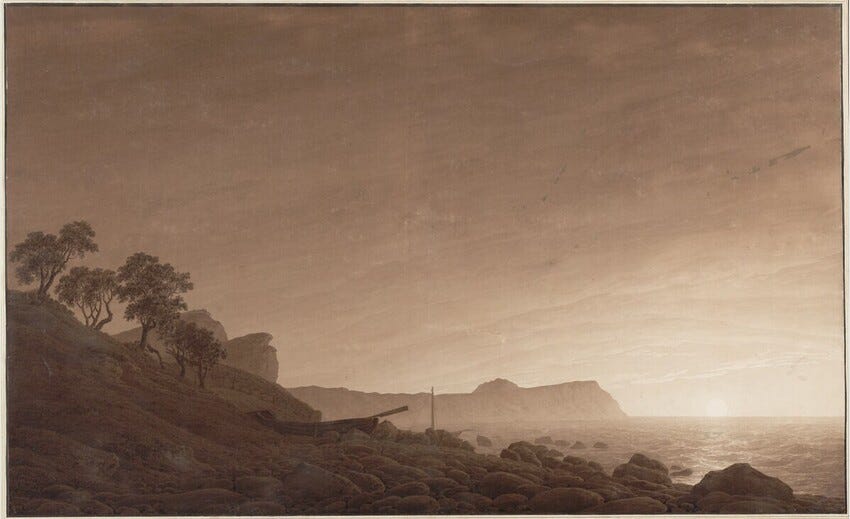Caspar David Friedrich
View of Arkona with Rising Moon, 1805-06
Brown ink and wash over pencil
24 x 39.25 inches
The Albertina Museum, Vienna, Austria
Welcome to the first installment of Pondering, a supplement of Damned Hard Work, where I share work by artists that make me think, remember, reconsider…ponder.
The work of Caspar David Friedrich is experiencing a great resurgence of interest. Last year was the 250th anniversary of his birth and Germany hosted a myriad of exhibitions to honor him. Caspar David Friedrich: The Soul of Nature has now come to the Metropolitan Museum of Art in New York. A combination of the 2024 European exhibitions, this is the first Atlantic-side exhibition of his work in decades. I was anticipating these exhibitions because it meant I would get new opportunities to see his work and of course, the books that come along with them. The Met exhibition continues through May 11, 2025, but I am sure I will still be thinking of his work long after that.
The light and air he achieves in washes of this brown ink is astonishing. His compositions are relatively simple, hinting toward modernist color field compositions of the early 20th century. Clearly he was ahead of his time while being very much a part of his time. He was a student of nature and throughout his life he filled journals and sketchbooks with drawings of plants, rock, ruins, etc. in pencil, wash and/or watercolor. The work he did out in nature came into the studio with him in those journals, and in spirit. In both his finished drawings and oil paintings, Friedrich achieves a clarity in not just how nature looks, but how it feels. He was not afraid to push political buttons too. He didn’t just paint and draw his observations, he used those observations to create metaphor and embed subtle arrangements of symbol into each work. At first glance, Friedrich’s Arkona composition is all nature and reverence for the power of nature, but notice the ship tucked into the coastline and the rowboat nestled into (concealed by) the rocks. A subtle touch by Friedrich to tell us that this nature is inhabited. Again, ahead of his time, he looked at his landscape and transformed it into a powerful metaphor for his political and religious stance, two things that were in upheaval during his time.






